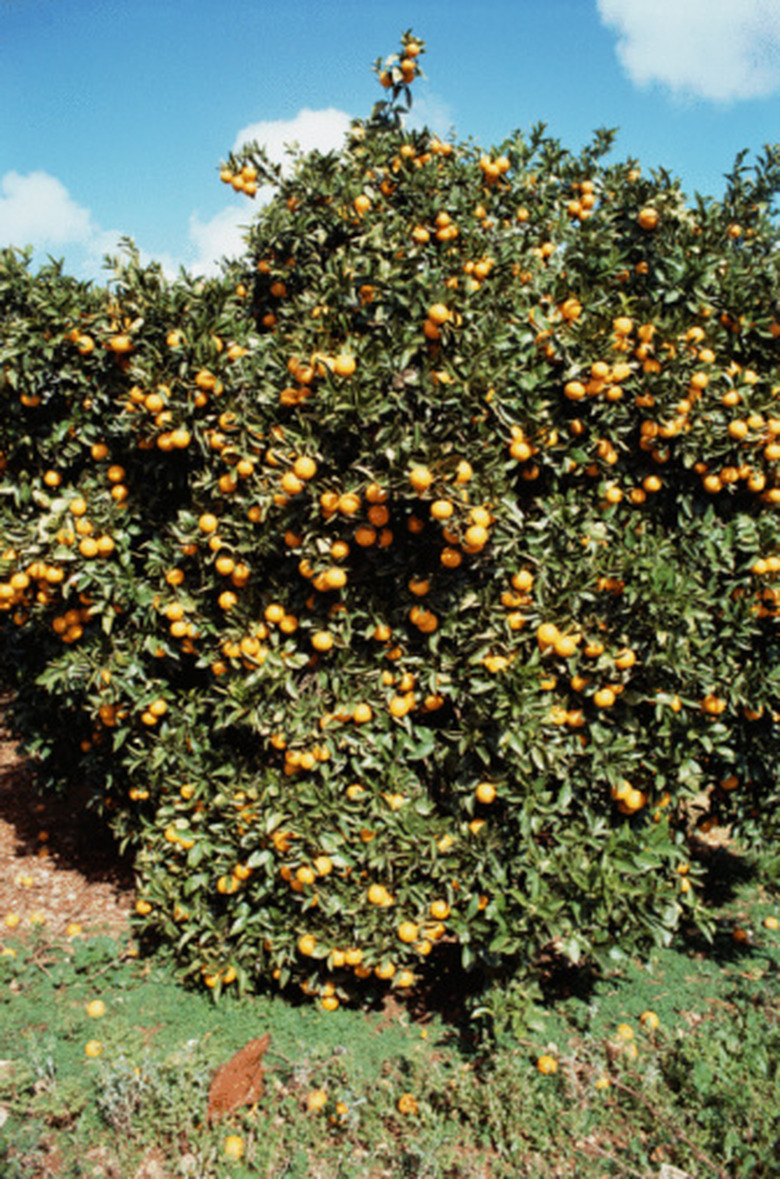Lifespan Of Citrus Trees
All citrus trees — including oranges, limes and kumquats — have the same potential maximum lifespan. The different varieties of citrus vary in size as well as fruit type. Climate and disease cut the potential lifespan short; however, so does low productivity. Growers usually replace trees with declining yields.
Natural Lifetime
About a thousand years ago, cultivation spread this important tree throughout the world's tropical zones. Because citrus fruit played an important role in the treatment of scurvy, sailors intentionally established groves near tropical ports. Spanish sailors brought seed to the Americas in the 15th and 16th centuries. Citrus trees could live to be a century old, but the productive lifetime of trees falls short. Harvests naturally decline after about 50 years.
- All citrus trees — including oranges, limes and kumquats — have the same potential maximum lifespan.
- Because citrus fruit played an important role in the treatment of scurvy, sailors intentionally established groves near tropical ports.
Commercial Lifetime
Because of new diseases, the productive lifetime of many new citrus groves drops well below the natural 50-year productive lifespan. Citrus greening, a disease spread by the Asian citrus psyllid, infects trees with bacteria that cause bitterness in the fruit and ruin its market value. In areas affected by citrus greening, the useful lifespan of a citrus tree could end at only 15 years. As yet, no treatment exists for citrus greening beyond removing infected trees and replanting. Citrus greening arrived in Florida in 2005 and has since been detected in Louisiana and South Carolina.
Weather Extremes
Citrus trees tolerate very mild winters but don't survive hard freezes. Irrigation and artificial heating might pull groves through a hard frost, but most citrus trees die when exposed to temperatures of 21 degrees F or below. The citrus industry in Florida centered in the north central part of that state for much of its history. During the winter of 1894 to 1895, cold weather devastated groves and caused a shift in production to the southern part of the state. Cold snaps periodically cause severe damage to groves, even in tropical Florida.
- Because of new diseases, the productive lifetime of many new citrus groves drops well below the natural 50-year productive lifespan.
Indoor Citrus
In northern areas, citrus trees make interesting plants for container growing indoors. Ponderosa lemon and Calamondin orange adapt well to indoor life, although all citrus plantings will need extra humidity and artificial light during the winter months. Citrus must be sheltered indoors before outside minimum temperatures drop below 50 degrees F. Since the trees depend on insects for pollination, fruit won't set on the trees unless growers pollinate by hand. Containers limit the size of root systems, and the size of the tree at maturity, but with excellent care, an indoor citrus tree could live to a ripe old age.
References
- Sunkist: Citrus 101
- Smithsonian Marine Station: Citrus Spp.; J. Masterson; December 1, 2007
- Four Winds Growers: Problem Solver — Size and Lifespan of Dwarf Citrus
- Clemson University: Menacing Citrus Disease Detected in South Carolina; Peter Kent; April 13, 2009
- Purdue University: Growing Citrus Indoors In Cool Climates; B. Rosie Lerner; April 10, 2006
